The Zamioculcas: [Care, Planting, Irrigation, Substrate]
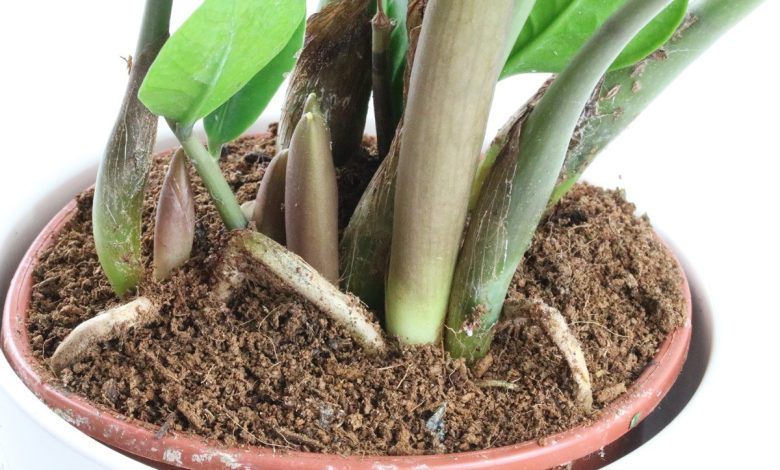
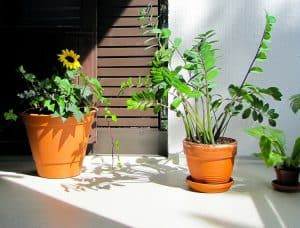 The Zamioculcas or Zamioculca zamicifolia is a very beautiful indoor plant, resistant, with a modern appearance and low care requirements.
The Zamioculcas or Zamioculca zamicifolia is a very beautiful indoor plant, resistant, with a modern appearance and low care requirements.
Originally from the African continent, thisPerennial herbaceous plant has glossy dark green leaves with round leaflets, a thick stem and roots that act as excellent water reservoirs.
Characteristics of the zamioculcas
- Plant family: arum family (Araceae).
- Genus: Zamioculcas.
- Species: Zamioculcas zamiifolia.
- Trivial names: ZZ Plant, Gem of Zanzibar, aromatic palm, plant of eternity.
- Origin: Kenya
- herbaceous, perennial plant.
- Height: 30 centimeters to 90 centimeters.
- All parts of the plant are poisonous.
- Bright and bulbous inflorescences.
- Popular houseplant for beginners.
Indeed, the Zamioculca grows about 60 cm tall thanks to the help of an underground succulent rhizome from which leaves 40 cm or a little more sprout.
These leaves are composed of numerous very fleshy elliptical leaflets.
Specimens of this species can grow up to about 60 centimeters tall and develop from an underground succulent rhizome, from which sprout pinnate leaves 40 to 60 centimeters long made up of dozens of elliptic, fleshy, toothed, and pointed leaflets. shiny dark green, each 7 to 15 centimeters long and 2 to 5 centimeters wide.
- Temperature: Average heat is fine at about 15-24°C and not less than 8°C.
- The light: Bright light is good but not essential. Zamioculcas zamiifolia grows well in low light levels, it is best to avoid direct sunlight.
- Watering: Let the soil dry to the touch between waterings and do not overwater. It is better to water this plant less than too much because too much water can cause stem and rhizome rot.
- Soil: Most well-drained potting mixes will suffice as long as they contain a large amount of perlite or sand within the mix (you can add more perlite or sand if needed). It is essential that there are good drainage holes in the bottom of the pot.
- Fertilizer: During the main growing season (April – August) feed with a balanced liquid fertilizer that is diluted, once a month.
- Humidity: A medium humidity in the house is advised, but increase the humidity if the artificial heating inside the house or the workplace is quite dry.
- Propagation: It can be propagated by dividing the rhizomes or with leaf cuttings. The leaf cuttings should be placed in a pot with a plastic cover and then the roots are expected to start growing, which could take up to a year.
- Pruning – Cut off leaflets that are turning yellow near the base of the stem. Once a stalk has grown much longer than all the other stalks, that stalk can be removed or cut to tip size. The problem with cutting it to size at the tip is that it can be quite awkward, so removing it completely might be the best option.
Temperature: Where to plant zamioculcas?
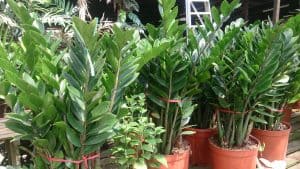 Enjoy temperatures between 10 to 18°C
Enjoy temperatures between 10 to 18°C
Although the plants of this species can develop in places with little light, it is recommended to place the pot in well-lit areas with temperatures between 10 and 18 degrees Celsius.
Light: What needs do you have?
This perennial succulent really does not require high demands on natural lighting. It can grow in places where artificial light abounds instead of sunlight.
But the ideal state of lighting will be the one where it receives indirect natural light, so that its shoots are robust and have a dark green color as a result of a good photosynthesis process.
Substrate and Fertilizer: How do we prepare the land?
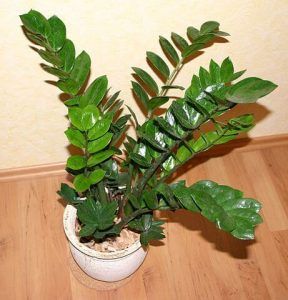 One of the main aspects of its care is that the roots grow very strongly until the volume of soil or substrate is reduced, so it is advisable to change to a larger pot every two years. If you don’t, your growth will slow down.
One of the main aspects of its care is that the roots grow very strongly until the volume of soil or substrate is reduced, so it is advisable to change to a larger pot every two years. If you don’t, your growth will slow down.
As for the cultivation from small seedlings that can be bought in the nursery of your trust, it is ideal to do the transplant in the spring, with the help of a pot larger than the lump of the purchased specimen.
First, a layer of material is placed that facilitates excellent drainage, consisting of clay balls, broken stones, pine bark, gravel or ceramics.
Second, add a substrate made up of 50% leaf compost, heather soil and perlite, along with another 50% sand. Another option is to purchase a universal potting soil.
As the plant sometimes deforms or damages the pot due to the thickening of the roots, you may need to break it with the help of some tool. Try not to damage the roots in the process.
Irrigation: How and how often do we water?
 The Zamioculca, as we have already said, has a powerful ability to reserve water in times of drought as a result of its rhizomatous qualities, in order to survive in the arid areas where it comes from.
The Zamioculca, as we have already said, has a powerful ability to reserve water in times of drought as a result of its rhizomatous qualities, in order to survive in the arid areas where it comes from.
Therefore, irrigation will never be abundant, but moderate and, as in almost all perennials, it will only be repeated after confirming that the soil or substrate is completely dry.
In the winter period, water supplies are significantly reduced. Moreover, if you stop watering it, nothing bad will happen. Once or twice a month will suffice. You don’t even need to spray its foliage in summer, in times of great heat, because the Zamioculca will know how to manage itself.
What is vital is that in the spring you add a good fertilizer to the irrigation water once a month, because this period is when the plant consumes more energy.
It tolerates dry environments perfectly well, so it does not require spraying on its foliage since the moisturizing reserves of its rhizomes will be activated.
 This African perennial of great elegance will embellish any room in your home, in exchange for a little love and two main keys: controlled watering and good indirect light.
This African perennial of great elegance will embellish any room in your home, in exchange for a little love and two main keys: controlled watering and good indirect light.
Is zamioculcas toxic?
Yes, very careful. All parts of the zamioculca are toxic and therefore we do not recommend growing and using this plant indoors if you have small children or pets.

![Photo of White Astilbe: [Characteristics, Cultivation, Care and Disadvantages]](https://www.complete-gardening.com/wp-content/uploads/2022/08/white-astilbe-characteristics-cultivation-care-and-disadvantages-390x220.jpg)
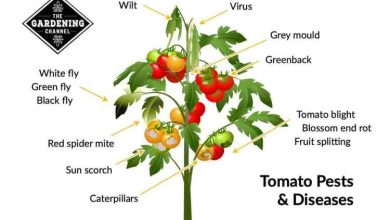
![Photo of Jade Care: [Earth, Humidity, Pruning and Problems]](https://www.complete-gardening.com/wp-content/uploads/2022/08/jade-care-earth-humidity-pruning-and-problems-390x220.jpg)
![Photo of Lawn Mower: [The Best on the Market in 2021]](https://www.complete-gardening.com/wp-content/uploads/2022/08/lawn-mower-the-best-on-the-market-in-2021-390x220.png)